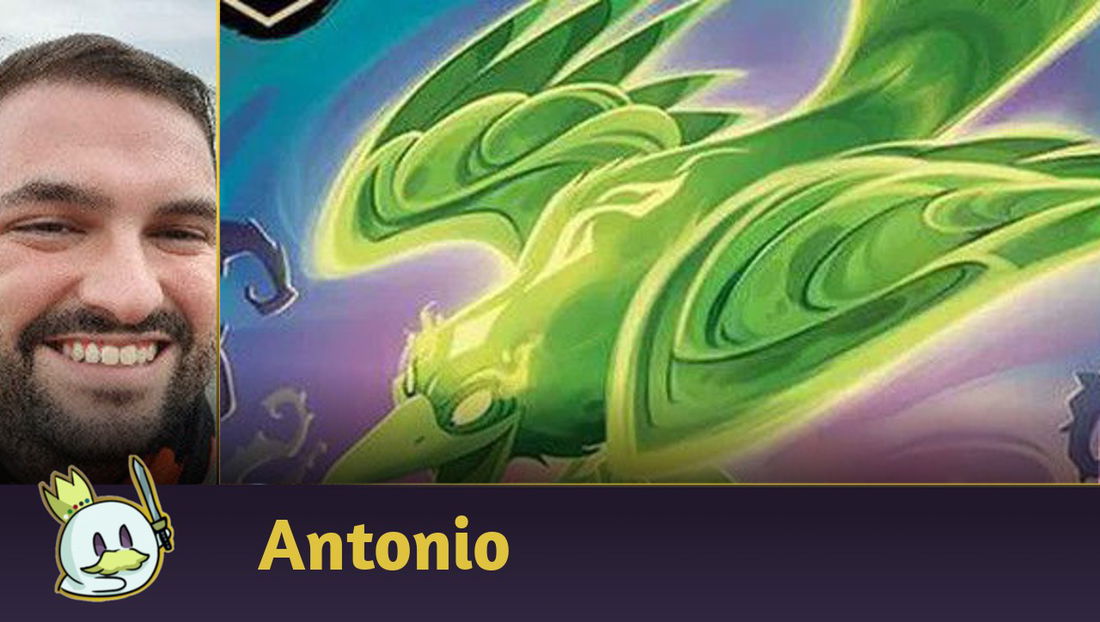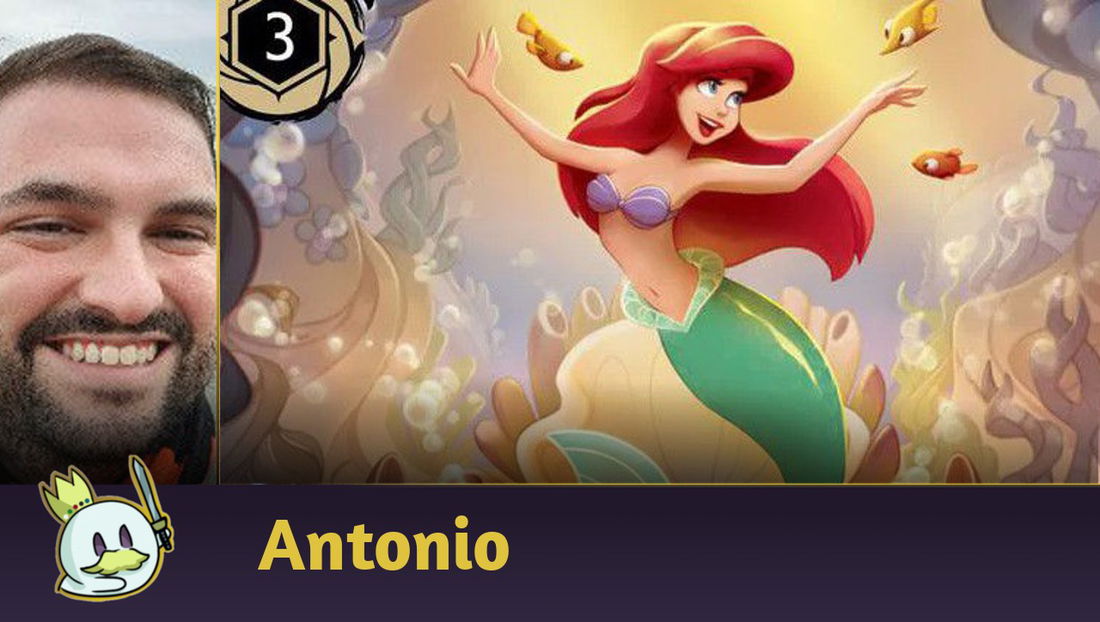Hello, everyone!
The Shimmering Skies Set Championships season is in full swing, and that's why I decided to bring today a deck considered one of the most “efficient” in the game, capable of very quick wins and, in terms of strategy, extremely focused, since it basically ignores the opponent's moves while advancing its own gameplan.
So let’s break down Amber/Emerald, one of the most feared “aggros” in the game!
Introducing the deck - strategy and gameplay
What is an “aggro” deck?
“Aggro” is a term widely used in card games to refer to “aggressive” strategies, that is, strategies that seek to make impactful plays in the first turns to quickly achieve a win condition.
Since most card games have some form of combat, the term “aggressive” normally indicates that these decks constantly seek confrontation, but in Lorcana it specifically indicates a strategy focused on reaching 20 Lore points as soon as possible to win the game .
To achieve this goal, “aggro” strategies in Lorcana typically look for two things: low-cost characters (1 or 2 ink) that generate 2+ Lore per turn; and cards that protect these characters. It is also common to have a few cards that interact with the opponent, and finally a bit of card draw, to “refuel” if your opponent manages to deal with the initial threats.
Now that we understand the strategy, let's analyze an example of a decklist and how each element mentioned is present in it:
Efficient Lore-Generating Characters

The list has 1-cost characters capable of generating 2 Lore points, and the little 2-cost Piglet that potentially generates 3 Lore points. The basic math of the deck is to generate 4-6 Lore every turn starting normally from the 3rd, which means reaching 20 Lore and winning the game between turns 5-6 consistently.
Notice how it's very important that the game ends before the opponent reaches turn 7, which is when very strong board control cards like Be Prepared can start to be used.
Defending the Lore Generators

The choice of 3-cost characters includes excellent defensive options, to continue the first two “aggressive” turns and allow the initial characters to generate Lore without giving the opponent the chance to counterattack.
A touch of interaction

Some cards are used to slightly disrupt the opponent's game, since you normally only need to delay the opponent's key moves by 1 or 2 turns to secure your victory.
Clarabelle is good against items, and Ursula is good against songs (including the aforementioned Be Prepared, among others), so both cards allow that “breathing room” for the deck to continue generating Lore with impunity.
Time to Refuel

After the initial turns, if the game isn't yet defined, it may be necessary to prepare a “second wave”. To do this, it is important to have cards in your deck that both impact the table and increase your resources - be it your hand or your inkwell (after all, adding a card to the inkwell is the same as “saving” a card from your hand).
When the game goes Long

Finally, for games where everything goes wrong, some options in the deck allow you to play the long game and get the last points of Lore to close it all out.
Clarabelle is especially good against decks that generate a lot of value (for example, with A Whole New World) while the 2 copies of Chernabog guarantee that your deck never “runs out” (since, if one of them is defeated/discarded, the second copy shuffles the first one back into the deck along with the rest of the Discard).
Analysis and Turn Strategy
Now that we have detailed the decklist and the role of each card is very clear, let's look at how the deck needs to behave at each moment of the game.
Starting hand and early game, turns 1-3: guarantee at least 2 characters that generate 2+ Lore on the board, 1 protection card and 2-3 cards to be used as ink.
Mid game, turns 4-8: evaluate how the opponent responds to your initial characters, and adjust accordingly - if it's a slow deck, try to disrupt or discard their control cards; if it's a fast deck, try to build a wide board and save resources.
End game, turns 9+: depending on how much Lore you managed to generate, look for evasive or “tough” characters to close out the game. If you start to fall behind on the board too quickly, try to replenish and retake control or “race” to 20 Lore before your opponent (since your deck is usually better than theirs at this).
It's worth remembering that there are no items, actions or locations on the list, it's a deck with 100% characters. This means every play you make impacts the board, and can be a potential threat that your opponent needs to respond to. This must be your game stance - be active, and pressure the opponent to find answers, thus commiting mistakes.
Conclusion
And so, this is the end of today's analysis! Amber Emerald Aggro is without a doubt a very fast deck and in the most efficient ink pair possible for the aggro game plan. It excels in punishing some slower decks, although it can struggle against decks with many different responses to their threats (for example, Ruby or Steel decks, which can control the board with both characters and songs).
What did you think of the deck? What other “aggressive” combinations have you used?
Lots of hugs and see you next time!














— Comentarios 0
, Reacciones 1
Se el primero en comentar